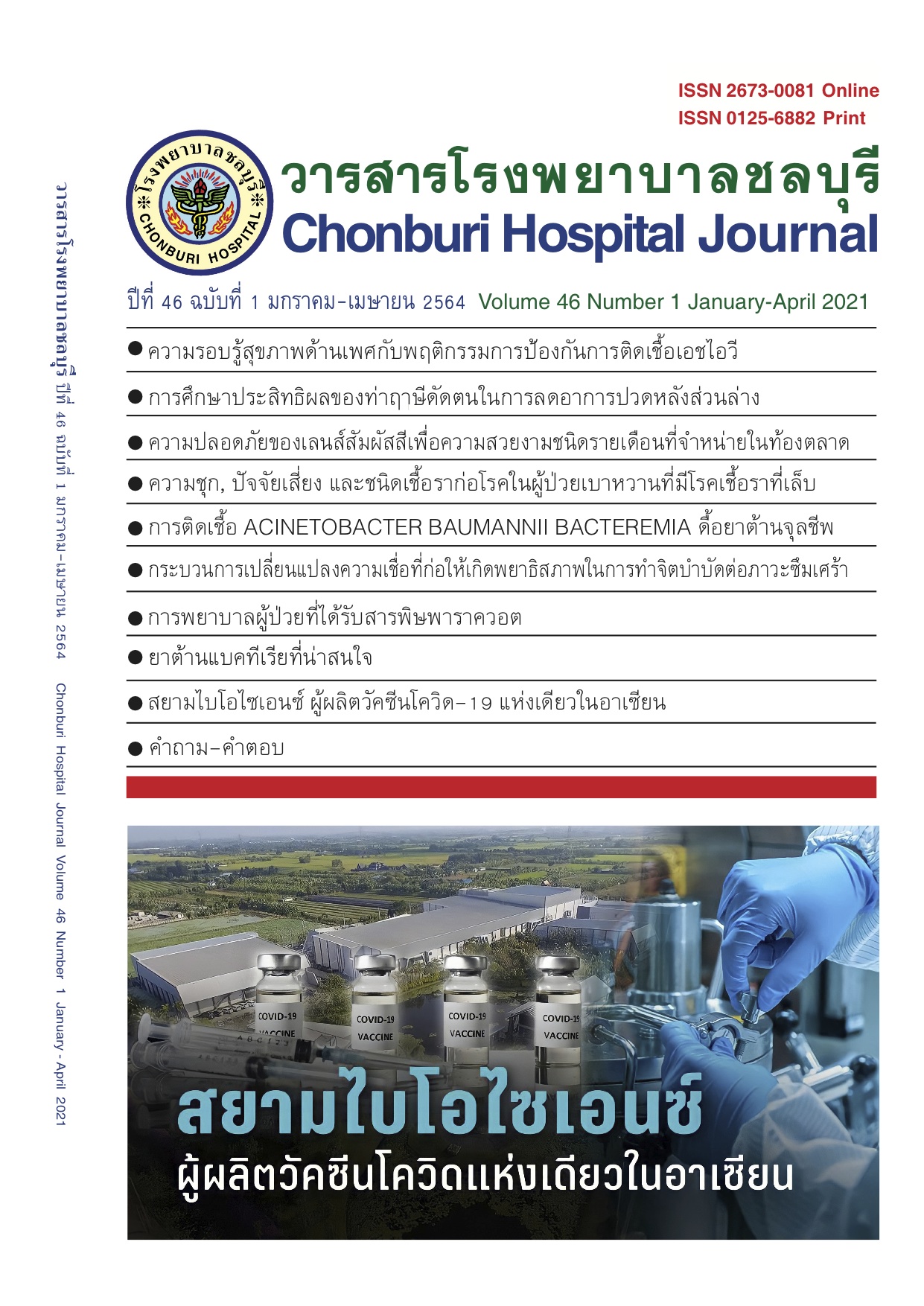The Prevalence, Risk Factors, and Type of Organism in Diabetic Patients with Onychomycosis
Abstract
People living with diabetes could be at risk for fungal skin and nail infection. Improper diagnosis and treatment can result in several consequences, including disability.
Objective: This research aims to study prevalence, risk factors and type of organism in diabetic patients with onychomycosis.
Methods: This cross-sectional study was conducted at Burapha university hospital between March 1, 2020 and August 31, 2020. Inclusion criteria were diabetic patients age > 18 years and consent to participate in this study. Participants were interviewed on medical history, examined nails and toe nails. Laboratory investigation which included by potassium hydroxide (KOH) preparation, periodic acid schiff (PAS) stain and fungal culture were done if onychomycosis was suspected.
Results: Of 304 diabetic patients, the mean age was 63 years and 45.72% were male . There were 52 patients (17.11%) with onychomycosis. The most common organism was non-dermatophyte i.e. Aspergillus niger complex (10 patients). The least common organism was dermatophyte i.e. Trichosporon inkin (1 patients). Patients with onychomycosis were significantly older than non-onychomycosis group (70 vs 61 years). In univariate model, age > 60 years was significantly associated with onychomycosis (risk ratio 3.159, 95%CI = 1.599-6.240)(p = 0.0001)
Conclusions: Diabetic patients more than 60 years of age were at risk for onychomycosis. The most common cause of organism was Aspergillus spp. which is uncommon in other population. Fungal culture should be recommended among diabetic patients with onychomycosis.
Keywords: onychomycosis, diabetic, prevalence, risk factor
Downloads
Published
Issue
Section
License

This work is licensed under a Creative Commons Attribution-NonCommercial-NoDerivatives 4.0 International License.
บทความที่ได้รับการตีพิมพิ์เป็นลิขสิทธิ์ของวารสารโรงพยาบาลชลบุรี
